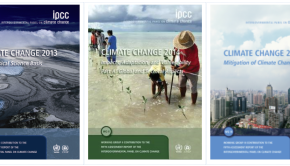Reducing Greenhouse Gas Emissions Could Help US Economy
October 15th, 2014 by Joshua S Hill
A new report from the World Resources Institute has found that reducing greenhouse gas emissions could benefit the US economy by saving businesses and consumers money, as well as improving public health.
The report, Seeing is Believing, builds on the Institute’s recently released New Climate Economy report, and analyses real world examples to demonstrate how the US could seize economic benefits while reducing its greenhouse gas emissions. The report examined five separate areas — electric generation, electricity consumption, passenger vehicles, natural gas, and hydrofluorocarbons (HFCs) — which together account for 55% of the United States’ current greenhouse gas emissions.
In each of the five areas the report shows that reducing greenhouse gas emissions “can yield significant economic benefits” even before including the obvious benefits of avoiding little things like drought, sea level rise, and increasingly catastrophic weather.
“These new studies provide a one-two punch that smart policies can drive growth and reduce emissions. Business leaders are waking up to this reality and it’s time for more U.S. elected officials to do the same,” said Andrew Steer, President and CEO, WRI. “From Texas to Iowa, more real-world success stories are emerging each day. We need to seize these opportunities to put America on a strong, low-carbon pathway.”
From each of the five categories, Seeing is Believing highlights an opportunity to reduce the country’s carbon footprint:
- Reducing carbon intensity of electric generation
- Improving electric end-use efficiency
- Building cleaner, more fuel-efficient passenger vehicles
- Reducing waste from natural gas systems
- Reducing consumption of hydrofluorocarbons (HFCs)
A blog post written by Nicholas Bianco, Senior Associate at WRI and lead author of Seeing is Believing, expands upon these five opportunities, highlighting the many and varied actions that can be taken to reduce the United States’ massive greenhouse emissions bill.
“States, companies, and federal agencies have been demonstrating for years that there is much that can be done to reduce greenhouse gas emissions while providing net economic benefits to average Americans,” said Bianco. “Now the question is whether the nation will build on that success by scaling up its investment in low-carbon technologies that save money. The right policy environment will be vital to fully realize this opportunity.”
A report from 2012 by the US Energy Information Administration showcased just how much US infrastructure plays into its greenhouse gas emissions total. Specifically, 40% of carbon dioxide emissions for 2011 came from electric power generation, 34% from transportation, and 27% from residential, commercial, and industry sources. At the time, the most recent data showed the United States as producing about 18% of the world’s total energy-related carbon dioxide — a number that is likely to have grown over the past few years, despite measures attempting to combat the rise.
We’ll be covering other aspects of this report on CleanTechnica sister sites Planetsave and EV Obsession. Keep your eyes peeled for those articles, which will be published within a few hours or less. [Update: the aticles are now published. See below.]
Related Stories:
Electric Cars Can Save You Money (Chart)
Electric Car Sales Growing Much Faster Than Hybrid Sales Did (Chart)
Keep up to date with all the hottest cleantech news by subscribing to our (free) cleantech newsletter, or keep an eye on sector-specific news by getting our (also free) solar energy newsletter, electric vehicle newsletter, or wind energy newsletter.
-
JamesWimberley
-
Matt
-
-
globi






























